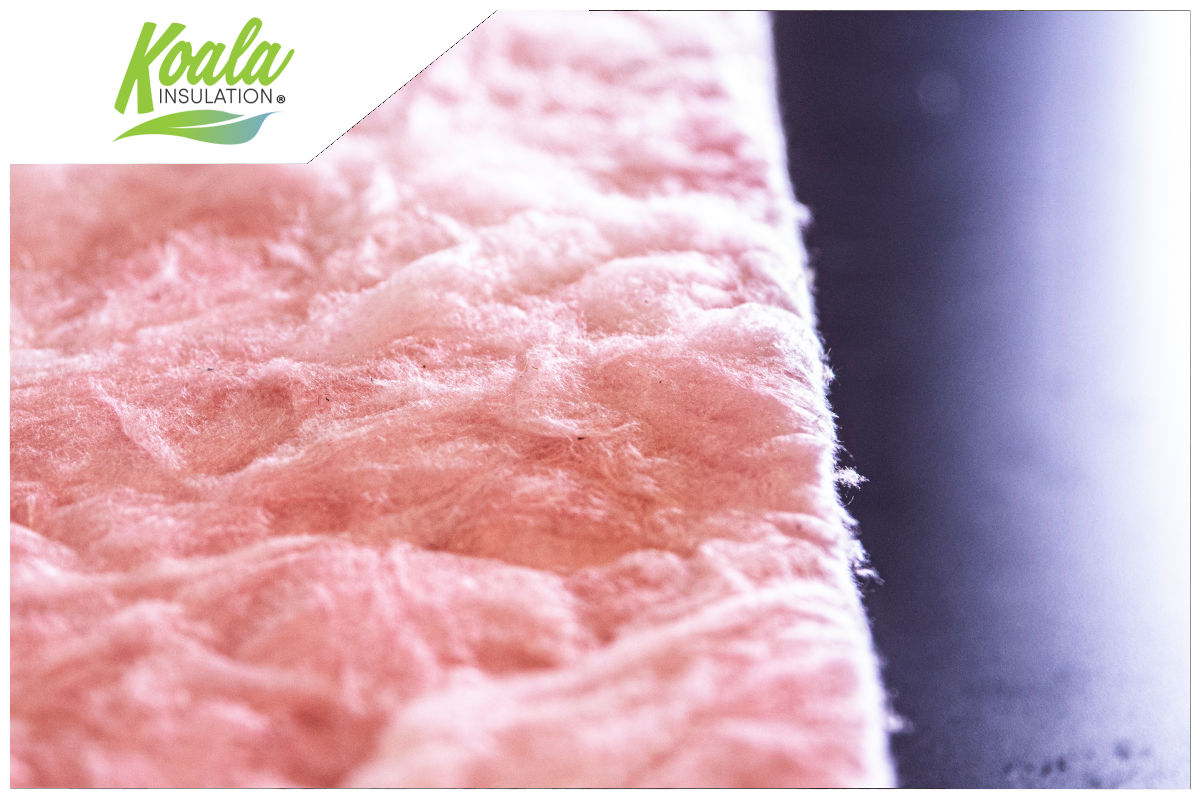Batt Insulation Kansas City FAQs | Koala Insulation

FAQ: Answers to Homeowners' Questions About Batt Insulation in Kansas City
If you're currently looking for ways to make your house energy efficient, insulation installation or retrofitting should be at the top of your list—and if you've already started your research, you may have realized there are a number of different options that can be confusing if you don't know much about the topic. Kansas City batt insulation isn't just the most common type, it's also the image that pops into most people's minds when they hear the word "insulation." But is batt insulation the best choice for your property? What are the advantages of choosing Kansas City batt insulation? And what exactly is batt insulation, anyway?
The team of trustworthy Kansas City insulation experts at Koala Insulation of North Kansas City has the answers to some of the most frequently asked questions we hear from local property owners about batt insulation. Kansas City, KS homeowners can rely on our experienced professionals for the helpful advice and expert services they need to keep their homes at comfortable, consistent temperatures all year round.
What is Batt Insulation?
When people refer to Kansas City batt insulation, they're talking about a format rather than a type of material. It is the most common form of insulation and also the most widely available, which is probably why it represents what most people outside of the relevant industries think of as insulation. Kansas City batt insulation is one form of blanket insulation, the other form being rolls. It's made of thin strands of flexible fibers with tiny air pockets interspersed among the fibers, formed into rectangular "blocks" or units. The units come in widths designed to match the standard spacing between rafters, wall studs, trusses and joists and are available in various thicknesses.
Kansas City batt insulation can be purchased with or without a facing that acts as a vapor barrier or air barrier and is typically made of paper, foil or vinyl. It's also possible to get batt insulation for basement installations that has a fire-retardant facing and is meant to be left exposed in an unfinished space. Other formats other than batt insulation include loose-fill insulation and spray foam insulation.
What Material is Kansas City Batt Insulation Made Of?
When it comes to materials for batt insulation, Kansas City, KS homes typically include either mineral wool or fiberglass batt insulation. Fiberglass is by far the most common type of material for batts. As the name suggests, they are made of fine, hair-thin strands of fiberglass loosely meshed together into a batt shape. This is the "classic" insulation that looks like fluffy, pink cotton candy. However, the shards of fiberglass can easily cut you and get stuck in the wounds, which is obviously not a pleasant situation, so it's important not to touch it with your bare skin regardless of how soft and comfy it looks.
Mineral wool, on the other hand, is made from rock, ceramic and metal fibers that are superheated and spun into hair-thin strands. It looks similar to fiberglass, except for the color, and functions in a similar way. It's also possible to get Kansas City batt insulation that is made with other types of fibers, such as sheep wool, cotton and plastic, but those are far less common because they're not as readily available.
What R-Value is Kansas City Batt Insulation?
It's important to keep in mind that Kansas City batt insulation doesn't necessarily have an exact R-value because it depends on the material the batt is made of and how thick the unit is overall. The R-value of any type of insulation is approximately expressed per inch of thickness. That means units with a higher R-value are more effective at preventing heat transfer. Factors like the thickness, type and density of a given unit are what influence its R-value, along with other considerations.
Essentially, R-value represents how much thermal resistance a unit of insulation has per inch of depth. Therefore, twice the amount of material with a lower R-value can provide the same amount of heat resistance as a lesser amount of material with a higher R-value. For example, one inch of insulation with an R-value of 30 provides the same heat resistance as two inches of insulation with an R-value of 15. The formula is R-value = 1 / k-value, where k-value is the inverse of R-value. K-value is a measure of thermal conductivity, or the ability of heat to be transferred through the insulating material, while R-value is a measure of thermal resistivity, or the ability of the material to resist heat transferring through it.
Where Should Batt Insulation Be Installed?
There are two important parts of a house where Kansas City batt insulation really shines—the attic space and inside the walls. The batts are already cut to the correct sizes to fit perfectly in standard-sized gaps between wall studs, ceiling rafters and floor joists. This way, your insulation installer can pack them into those gaps and get excellent coverage without needing to mess around with cutting them to the right size and shape. Batt insulation can also be used between stories to help muffle noise from above.
Which is Better, Kansas City Batt Insulation or Roll Insulation?
Batts and rolls are actually very similar to each other—they're just two different types of blanket insulation in slightly different formats. The main difference is the size and shape of the units. Batts are rectangles that are precut in standard sizes, which makes them easier to move around and install. They are typically about 15 to 24 inches wide and come in either 48- or 93-inch lengths. Rolls are basically what they sound like: big rolls of fibrous insulation that need to be unrolled and cut to the appropriate length. Like batts, they are typically around 15 to 24 inches wide, so they fit between floor or ceiling joists.
Both batts and rolls have similar costs and functions. They come in the same materials and range of R-values. So what is better for your Kansas City, KS house? That really depends on factors, including the size and shape of the area that needs coverage and whether there are obstructions that may need to be worked around.
If you've got a big, empty space, like an unused, open attic, rolls will likely be the preferred option. They can be installed quickly; it's easy to cut them at the end, so you've got the correct size for the area without leaving gaps between pieces. But if the space you need to insulate is vertical, like inside walls, or is strangely shaped, more cramped, or has plenty of obstacles to navigate around, batts are the best option. They are a lot easier to move, and they are much simpler to fit around columns, corners and other obstructions.
What are the Benefits of Kansas City Batt Insulation?
There are some major advantages to Kansas City batt insulation and not many downsides, which is why it's the standard choice of home builders, insulation contractors and homeowners alike for installations in walls or attic spaces. The key benefits of choosing Kansas City batt insulation include:
- Energy Efficient: If you're looking for thermal efficiency to lower your energy costs and you have an under-insulated attic or walls, Kansas City batt insulation will make a huge difference and reduce the amount you need to spend on your monthly energy bills. It's highly resistant to heat transfer, which means it'll help your building remain at a constant temperature for longer. That reduces the overall operation time for your HVAC system. Since your HVAC needs to use a lot of fuel to operate, reducing the amount of time that it's on will save you a significant amount of money over time. If it's installed correctly, batt insulation can actually reduce the energy consumption of your HVAC system by as much as 50%.
- Cost-Effective: As fiberglass insulation goes, Kansas City batt insulation is one of the least expensive options available. It provides excellent R-value for a very competitive price, making it a great choice for anyone who is trying to keep their budget under control and still embark on an energy saving journey.
- Versatile: Batt insulation are precut batts that can be easily fitted into a wide range of spaces, from a wall cavity to ceiling joist. Panels can also be cut if necessary to fit it around obstacles like electrical boxes and ductwork. When done correctly, you’ll have excellent thermal performance.
- Sound Deadening: If you live alone, this might not matter so much—but if you live in a busy household or have family members who keep odd hours, sound deadening is a big perk of Kansas City batt insulation. The insulation in your exterior walls helps a lot to cut down on outdoor noises like traffic, and besides thermal barrier, it provides an acoustical barrier that prevents sound from passing from room to room in interior walls. But batt insulation can also cut way down on sound traveling between storeys of your house and improve sound absorption when it's placed in the ceiling/floor area between your first and second or second and third floors, so you're not disturbed by footfalls or other noises from upstairs.
- Long-Lasting: Some types of insulation, such as the blown-in type, will compress or compact over time, causing the air pockets between the fibers to collapse and reducing the R-value and overall effectiveness of the material quite a bit. Compression also happens with Kansas City batt insulation, especially when it's vertically positioned, but it happens much more slowly than with loose-fill materials. That means batt insulation lasts longer before it needs to be replaced or retrofitted.
- Eco-Friendly: Not all Kansas City batt insulation is made from post-consumer, recycled materials, but the majority of it is made with recycled glass and other post-consumer materials like ceramic, metal filaments, fabric and plastic. That makes it a more environmentally-friendly choice than non-recycled materials, and it's also kind to the environment because it reduces the strain on energy resources.
What Are the Downsides to Kansas City Batt Insulation?
In all honesty, one of the biggest problems with batt insulation is that it is often installed incorrectly by people who don't really know what they're doing, or they do know, but they are cutting corners to save time and effort. If an installer doesn't take the time to perfectly fit Kansas City batt insulation around obstacles or irregularly-shaped spaces and leaves uninsulated gaps here and there, those gaps can potentially reduce the effectiveness of the overall installation to as low as 25%. Needless to say, that leaves the house seriously under-insulated and wastes all the time and money you invested into the installation in the first place. Another surprisingly common issue for DIY installations is that many insulation amateurs don't understand what the vapor barrier is and will either remove it from the batts or place it on the wrong side, leaving the material and everything else behind it vulnerable to moisture incursion.
Speaking of moisture incursion, Kansas City batt insulation does have a couple of downsides that aren't related to improper installation. It's not the best option for moisture control, so it may not be the right solution for areas such as un-encapsulated crawl spaces that are prone to being damp. There are also certain places in your house that may simply be better served by a different format, such as spray foam or loose-fill, but that's not really a downside of batt insulation—every building requires a combination of insulation formats for optimal energy efficiency and indoor comfort.
Count On the Experts at Koala for Kansas City Batt Insulation Services
If you live in Kansas City, KS or nearby areas, including Blue Springs, count on the team of experienced service providers at Koala Insulation of North Kansas City for insulation services, air sealing and more.
Our friendly customer service staff can be reached today at 913-675-6722 to schedule a consultation. Air leakage was yesterday’s problem! We look forward to showing you all the ways our services can improve the energy efficiency, comfort and longevity of your house.
Find Your Location


Get a quote



